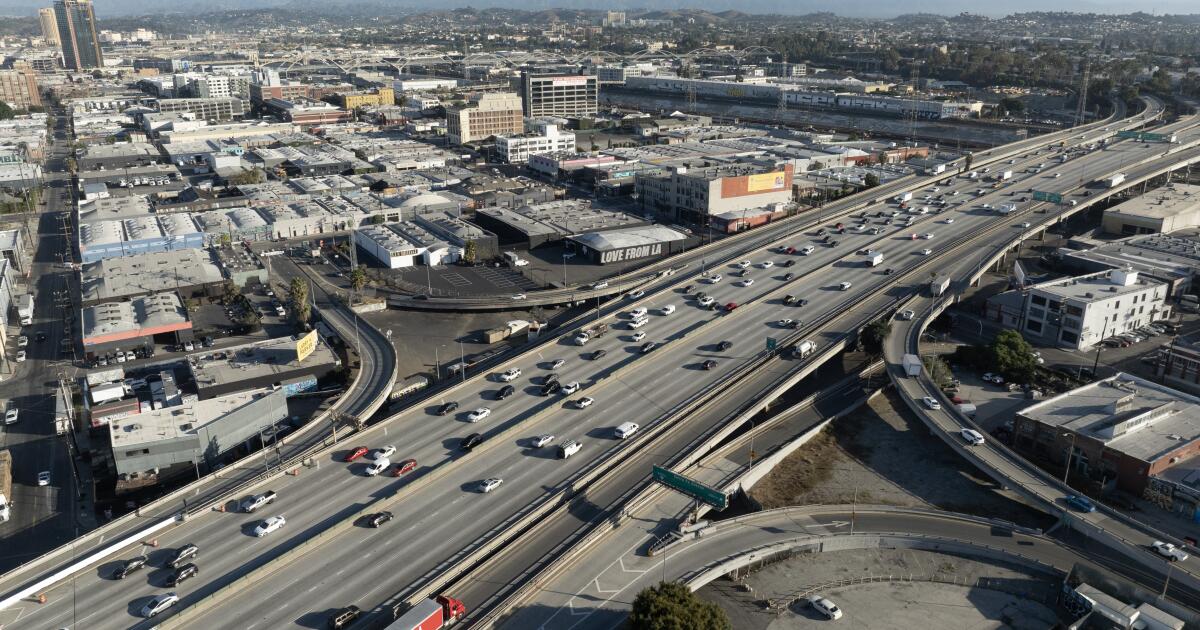With traffic again flowing above, construction crews in hard hats and high-visibility vests are busy surveying the scene: the belly of the 10 Freeway in downtown L.A.
Here, where earlier this month a massive fire scorched the roadway, large timber and steel structures have been erected to take the weight off seven rows of damaged concrete columns.
But what is actually going on under the freeway?
For all the accolades officials gave for reopening the 10 in days rather than weeks, state leaders have publicly said little about the precise damage caused by the fire, exactly how Caltrans plans to make fixes and how much the repairs will cost.
Though the shored-up freeway is safe for drivers again, repairs for the damaged overpass will take months, officials said. None of the damaged columns that hold up the overpass east of Alameda Street have been repaired yet, according to Caltrans spokesperson Michael Comeaux.
“Columns damaged by the fire will need to be repaired. The repair strategy may vary between individual columns depending on the extent of damage. The repairs will include the removal of any damaged concrete, patching of the damage, and wrapping the columns with steel casings,” Comeaux said in an email.
Emergency crews raced to clear debris and hazardous materials after the Nov. 11 fire, which arson investigators believe was started intentionally on Caltrans property leased to a company that was subleasing it to a handful of small businesses. There, piles of wooden pallets were stored alongside combustible liquids, which was in violation of state regulations.
In the following days, construction crews erected the shoring structures and road crews repaired damaged electrical systems, lane striping and signs on the freeway, and some damage to the freeway deck. Currently, engineers are developing a repair plan for the overpass, Comeaux said.
But Caltrans has declined requests for an interview about the work involved to repair the stretch of freeway, which carries roughly 300,000 daily commuters.
An engineer with Caltrans who was not authorized to speak publicly said forty-five columns show clear evidence of spalling, the technical term for the cracking and disintegration of concrete when it is exposed to extremely high temperatures. The heat evaporates water molecules inside the concrete, which makes the material weak and brittle.
Construction crews will have to remove the damaged concrete from each column. In many cases, the engineer said, that damage extends to the reinforcing metal known as rebar that is embedded inside the concrete and spirals around vertical lengths extending from the foundation to the freeway overhead.
Engineers have identified eight columns where the heat of the fire reached far deeper into the concrete. For those columns, crews will have to remove not only the compromised concrete but also the spiral of rebar, the engineer said.
Once the damaged concrete and steel have been removed, the columns will be rebuilt, most likely with steel jackets similar to those used in seismic retrofits of bridge columns (an earthquake review in the 1990s did not lead to jackets being placed around the columns at this location). Grout or concrete will then be injected between the jacket and column.
This story originally appeared on LA Times

